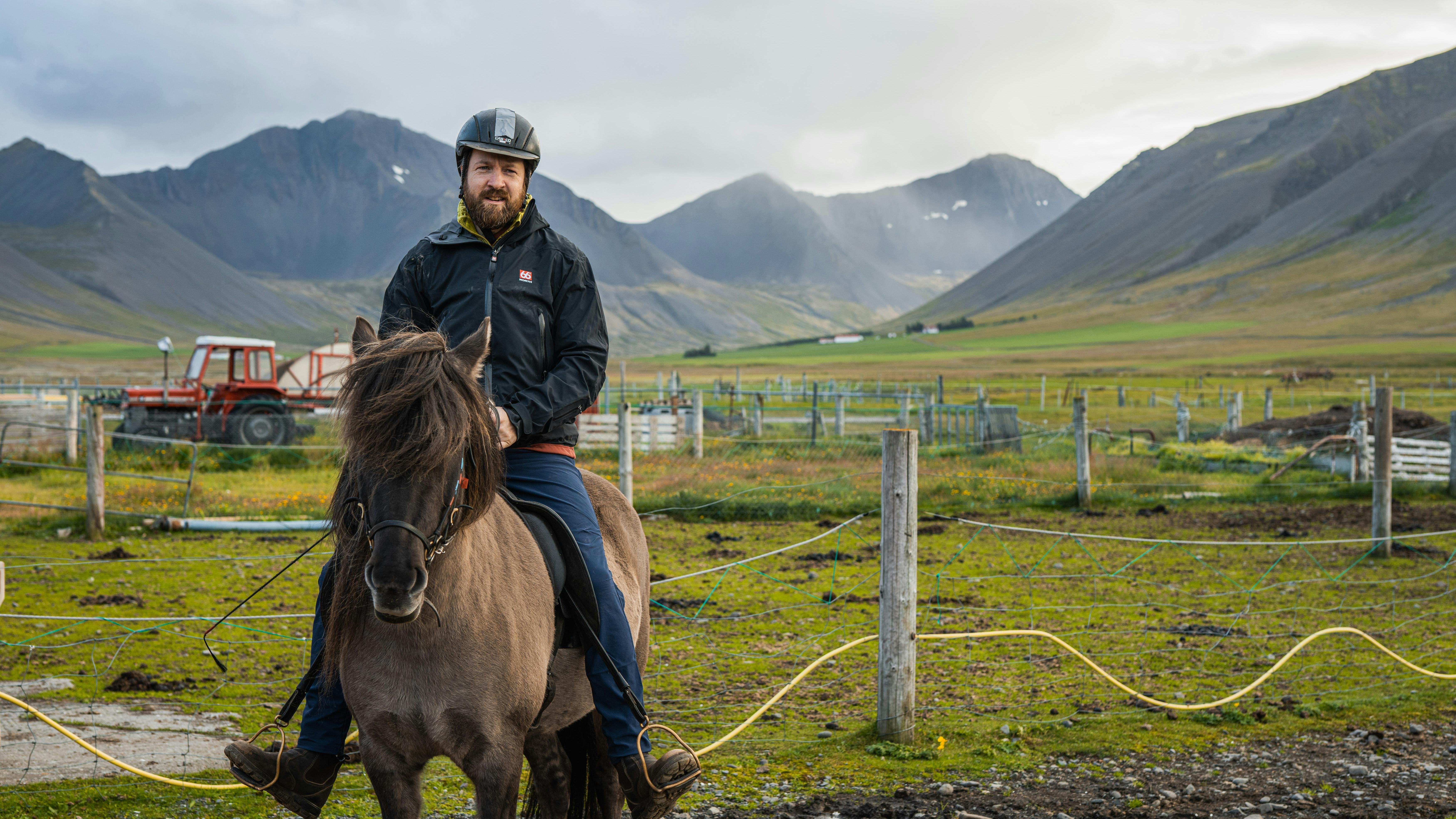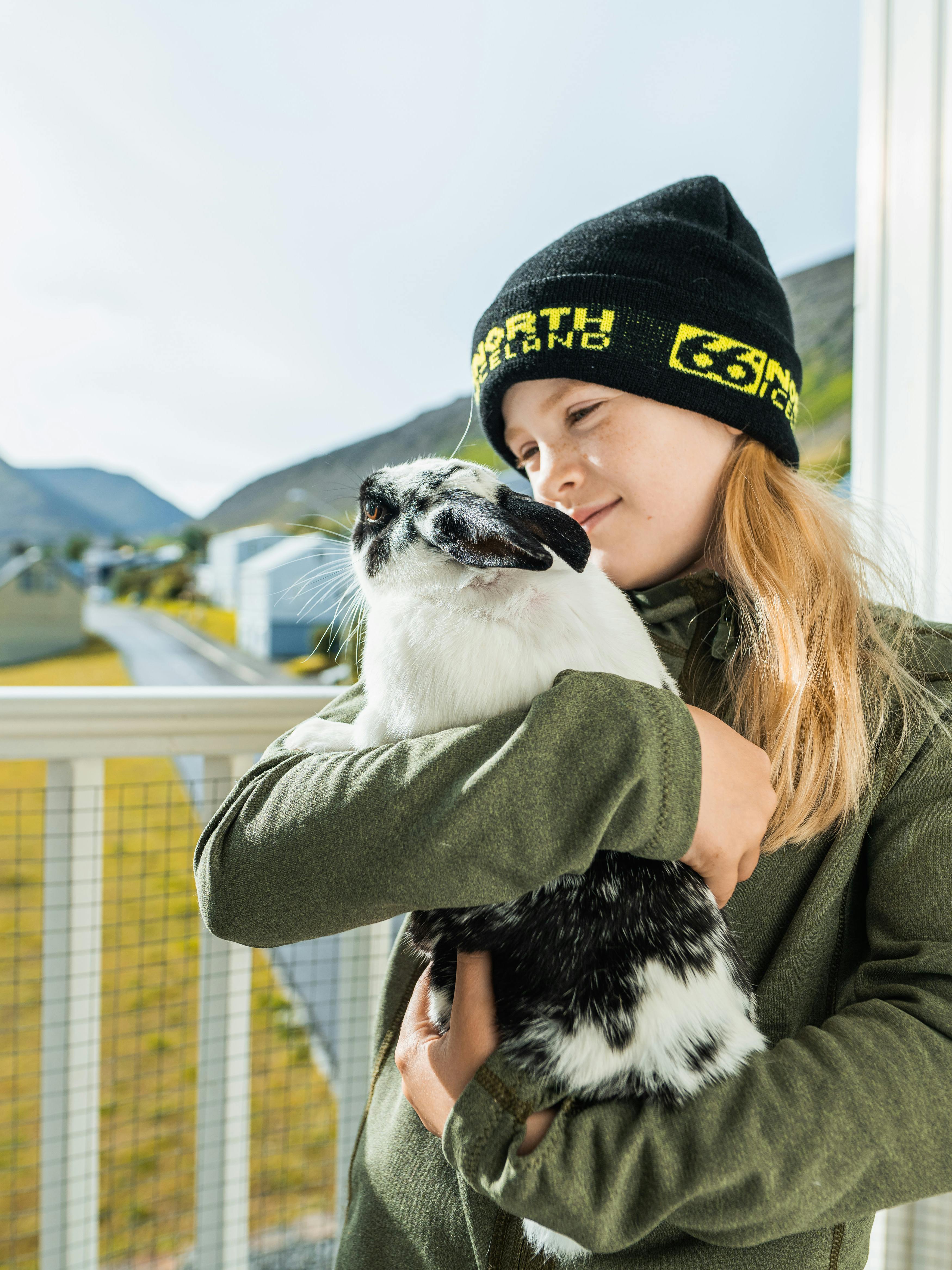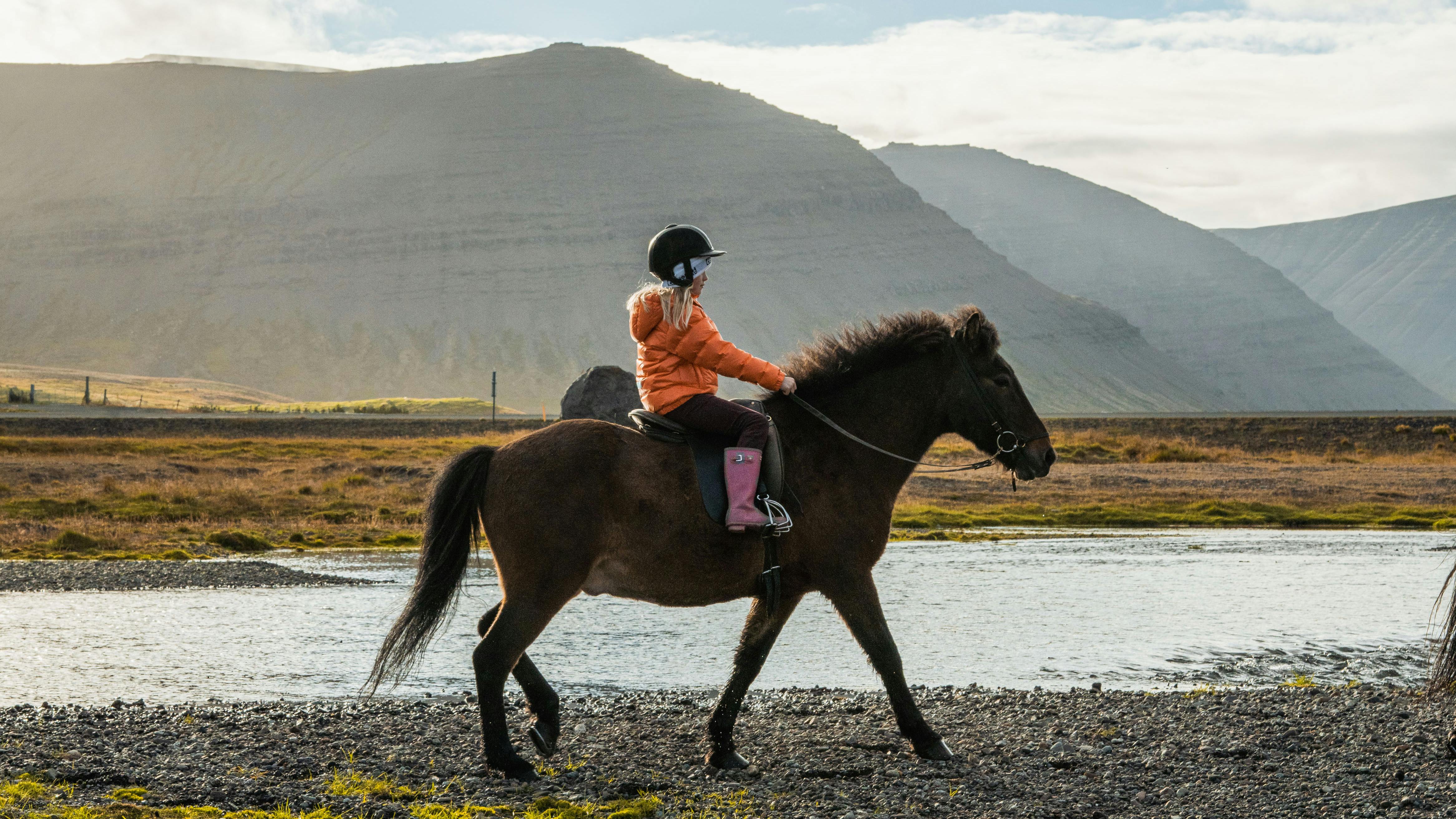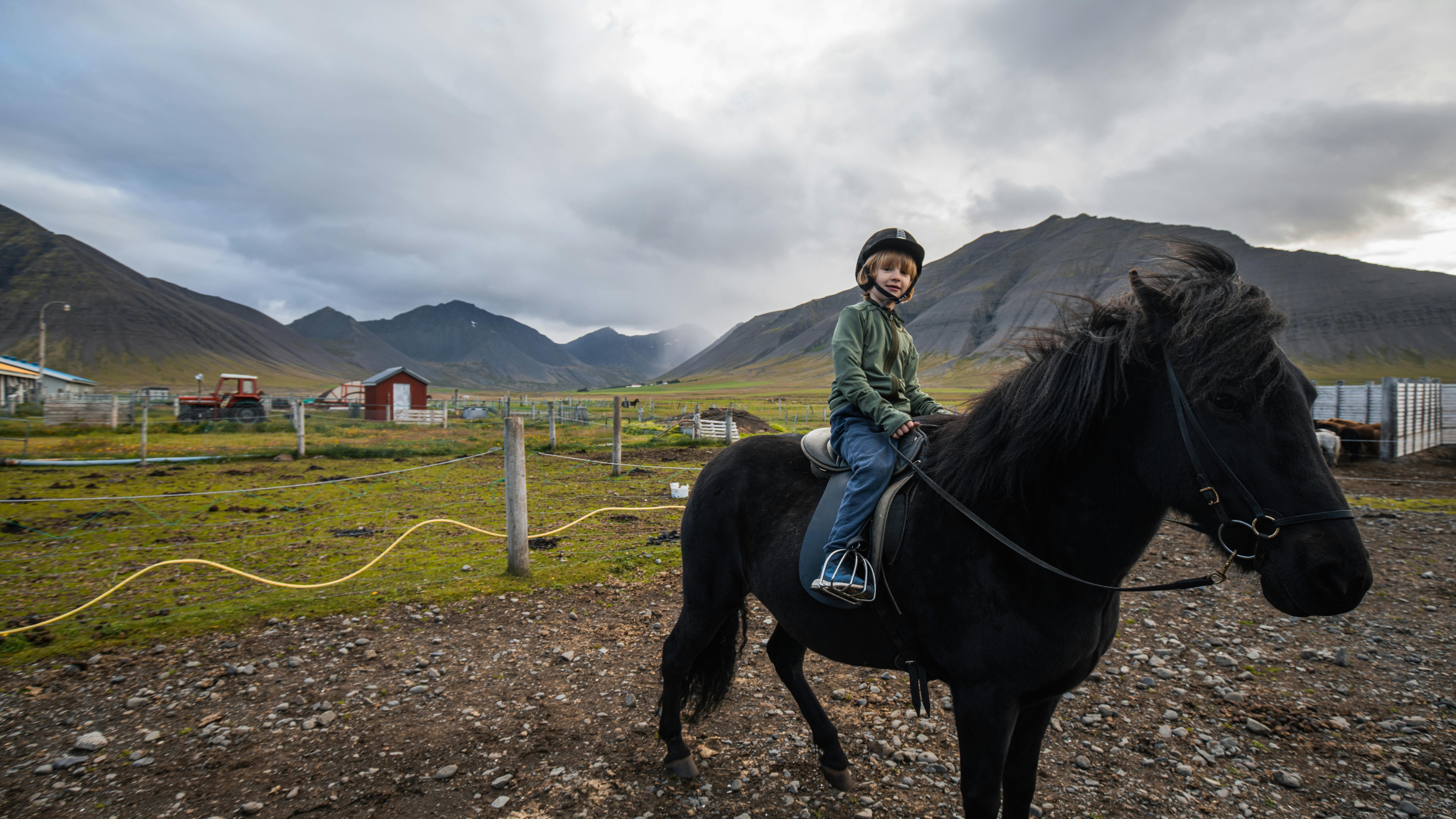
Finding home in the Westfjords of Iceland
Becoming a Westfjordian
What seems like an extreme place to most, seemed like the perfect place to call home for Wouter and Janne.
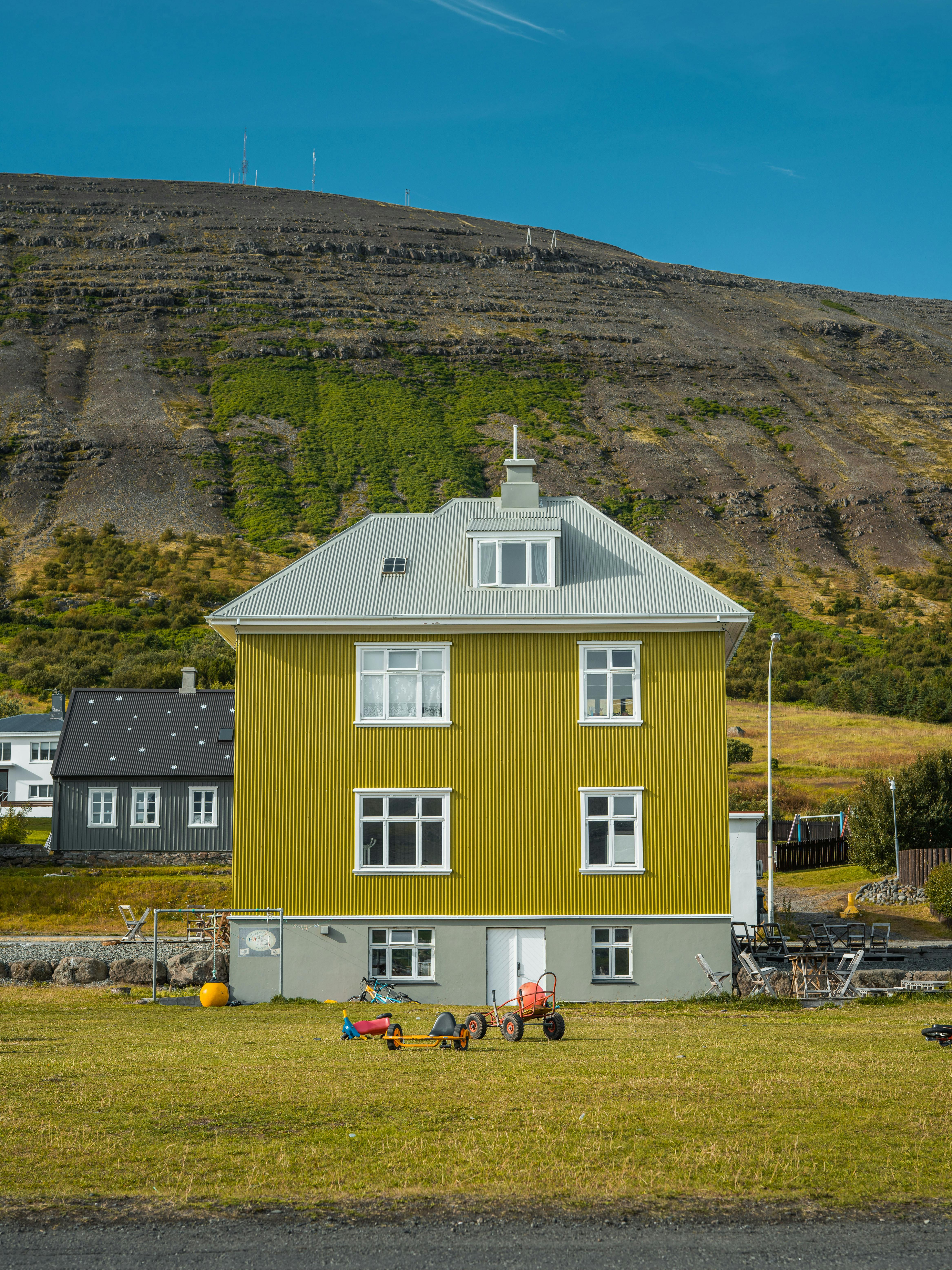


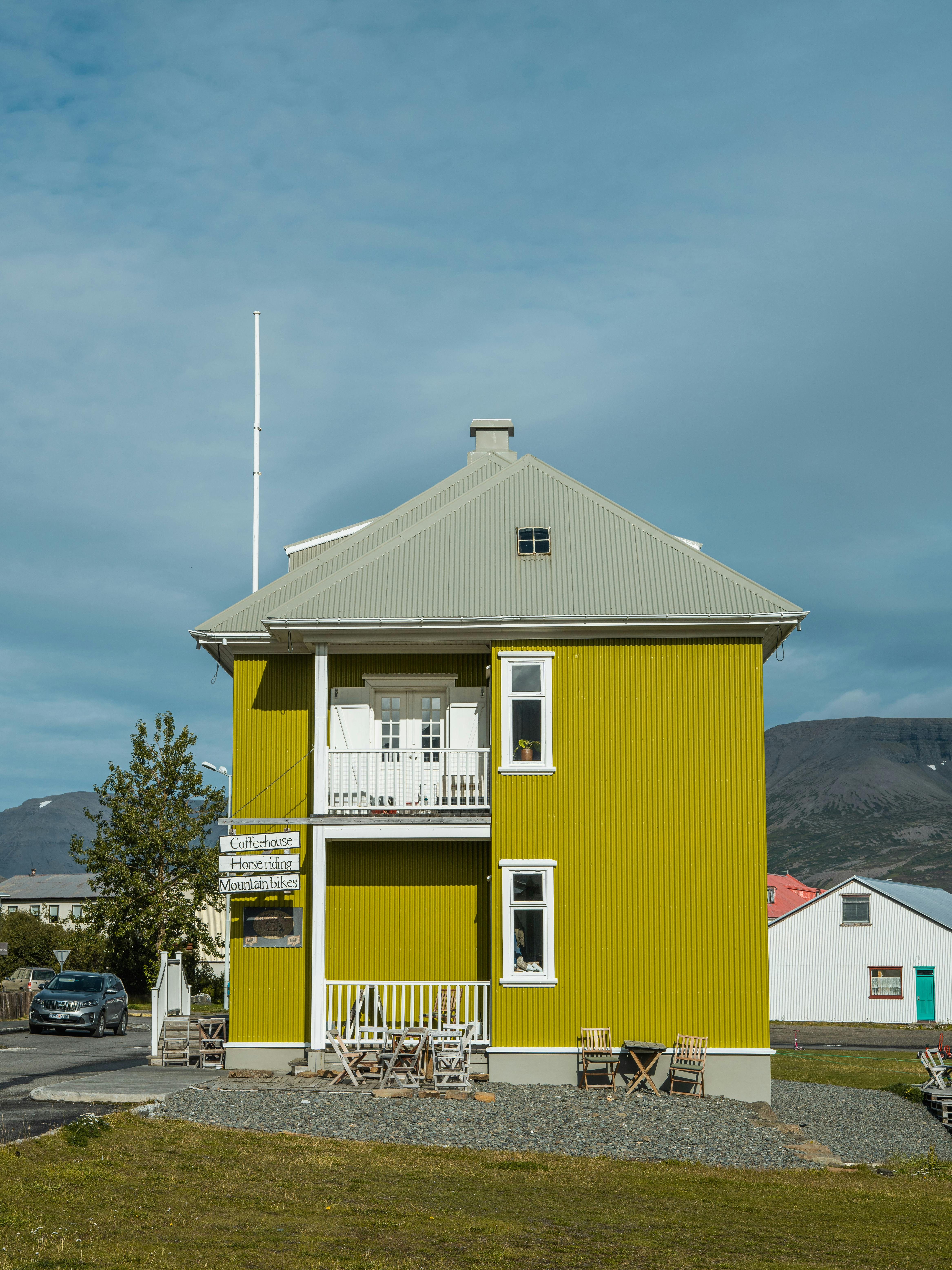
The North Western corner of the country. A place where the mountains meet the fjords at the edge of the Arctic circle. What seems like an extreme place to most, seemed like the perfect place to call home for Wouter and Janne.
In 2005, Wouter and Janne met in Reykjavík after both individually moving to Iceland to study and travel. It wasn't long before they started to travel the country together and took a trip to the Westfjords. They quickly fell in love with the small fishing villages and the slow living fjord lifestyle. There was one particular place that captured their hearts, the small village of Þingeyri, where they noticed a run-down house in the middle of town.
The house is named Simbahöllin. It was in especially bad condition when they found it, at the point of no repair to the eye of most. Yet for Wouter and Janne, they saw an amazing opportunity to create something special, all for the price of just 2,500kr ($20). It was here that their future together in the Westfjords began.
They sat down to tell us their story of integrating into the Westfjordian society and the history of their house Simbahöllin.
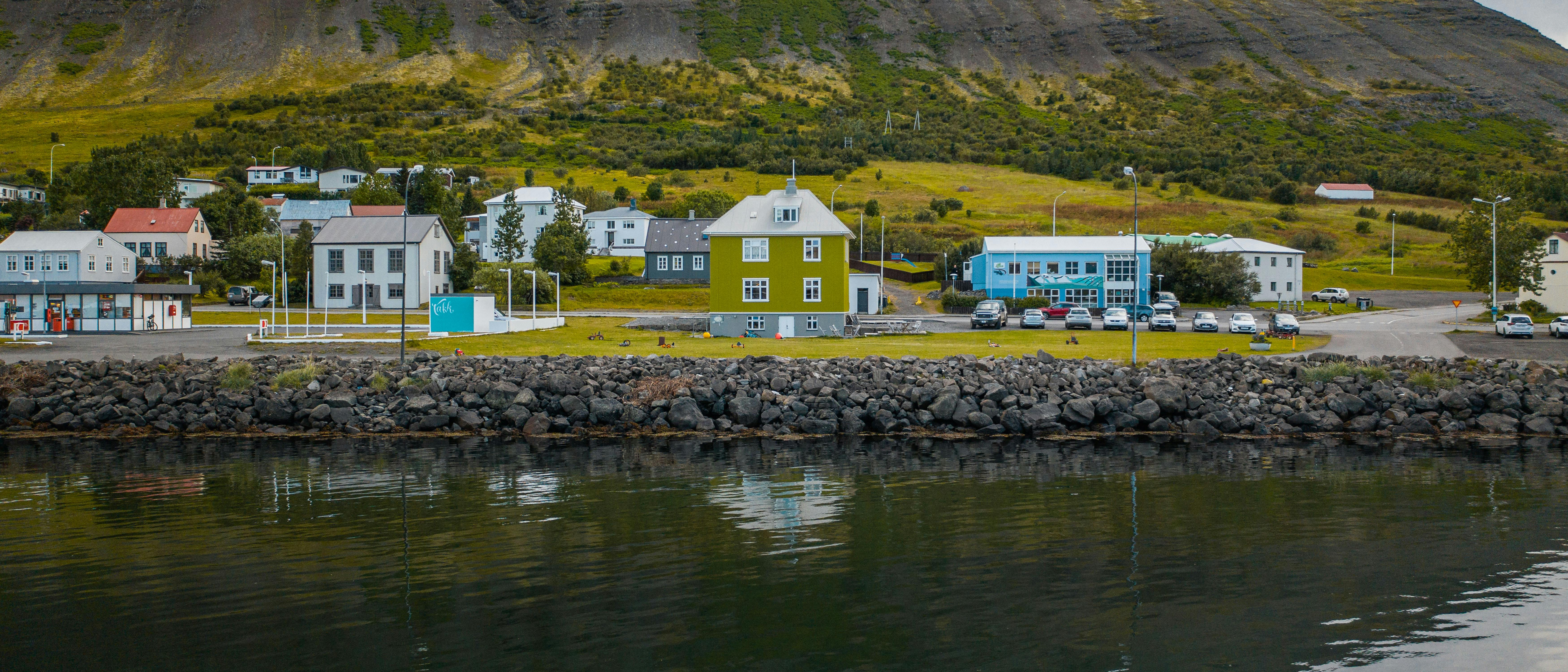
Imported to Iceland in 1915, Simbahöllin has served many purposes.

Simbahöllin is a Norwegian timber house, imported to Iceland in 1915 by the grocer Sigmundur (‘Simbi’) Jónsson. The house earned the nickname of “Simbahöllin” (“Simbi’s palace” in Icelandic) when the big four-story house rose up in the middle of Þingeyri.
Simbahöllin, or Sigmundarbúð, functioned as a general store from 1916 until the 1970s, when Sigmundur and his wife Fríða moved to Reykjavík. Sigmundarbúð sold all kinds of groceries and goods: flour, sugar, eggs, and meat along with clothes, buttons, rubber boots, fisherman’s clothes, and of course the famous homemade caramel sticks. People still talk about the caramel today, but sadly the original recipe has been lost.

Since Sigmundarbúð closed as a general store, Simbahöllin has had many different identities. The building has housed a video rental, an electrical shop, and perhaps most memorably has served as the dusty old bookstore in Dagur Kári’s film ‘Nói Albinói’ (2003). As Dagur said when we spoke to him: “The house was a perfect prop as it was standing there as a ghost palace in the middle of everything.”
"We have kept the original interior of the house mostly as it was originally, including the old shelves where the grocer kept flour, spices, and other commodities. We also found and kept the original books where customer’s orders and bills were recorded."
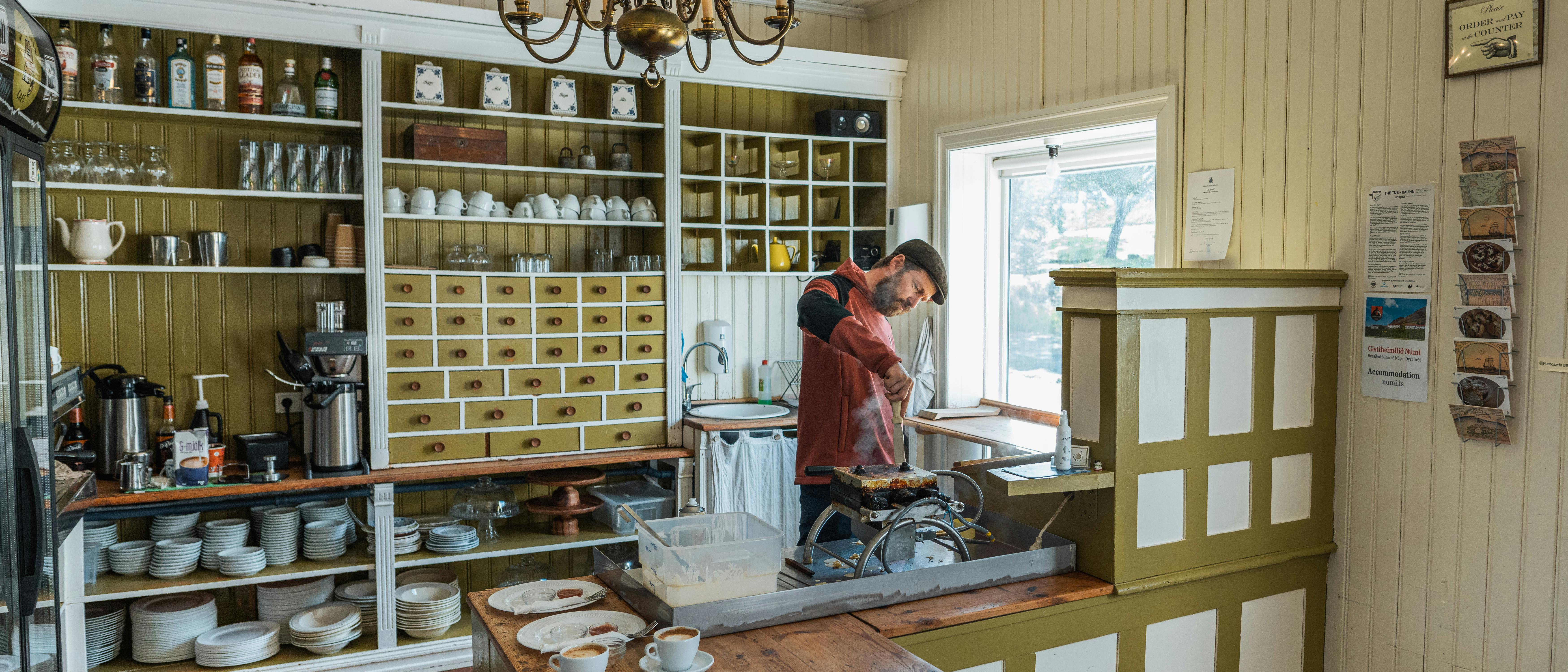

"As we discovered how well preserved the original shop and interior space was, we realized that the house needed to be shared with the larger community, and turned into a public space where the history of the house and new cultural events could coexist. The old storefront, all cleaned up, became the perfect venue for our cosy coffeehouse, and when we learned how to make Belgian waffles, and jam from the rhubarb growing out in the valley, it all fell into place. We wanted most of all to create something that would be part of a larger project, and contribute to the future of Þingeyri."

Taking an afternoon stroll around Þingeyri, it's hard to miss this beautiful house in the middle of town, it's clear that what they've created has truly had an impact. Heading upstairs into their personal living space above the café, it was quick to see that they deeply care for the original design elements of the building, with the cosy and rustic aesthetic following on from the café downstairs. It seems that part of their journey to become Westfjordians was to immerse themselves in the history of not only their very own Simbahöllin, but the culture of the Westfjords and Iceland as a whole. Watching the fishing boats come into the harbour from their kitchen window, Wouter told us about the local fishing industry, the town planning and his own new project to build an outdoor entertainment space and art installation for the locals to enjoy.
Being in a remote region of the country, they quickly adapted to the language of the locals, both becoming fluent in Icelandic. It was interesting to experience the family language dynamics as they talked with their two children Frosti and Fríða. They share an incredibly diverse mix of Flemish, Danish, Icelandic and English that bounces so effortlessly between them.
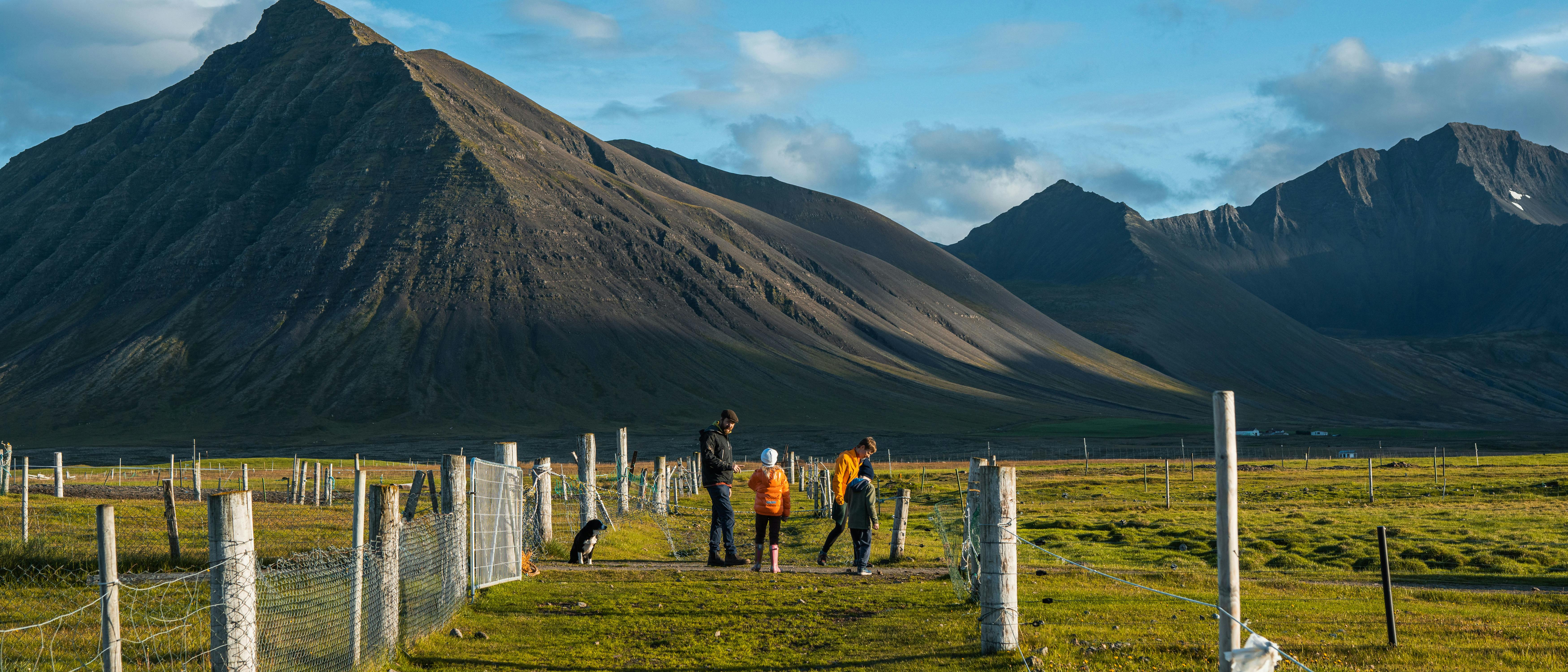

Travelling with the family into the nearby valley of Brekkudalur, we quickly realised how much they have taken to the countryside lifestyle. We were greeted with Wouter's custom-built orange horse stable overlooking the highest peaks of the Westfjords. He operates horseback riding tours throughout the summer months, giving travellers the opportunity to ride along the Dýrafjörður coastline and experience the peaceful and serene atmosphere around the fjord.

Hearing how much their café has had an impact on the Þingeyri is really inspiring. Not only has Simbahöllin become the local waffle house and the first real café in town, it now doubles as an art residency and hosts a volunteer program for travellers to stay a little longer in the Westfjords.
Becoming a Westfjordian comes with its challenges. The dark winters, remote location and extreme Icelandic weather with snow burying the town are simply a part of daily life. When paired with the small-town culture and strong sense of community in a village like Þingeyri, you are surely greeted with an exciting lifestyle. For Janne, Wouter and their kids, it is clear that they've found their dream combination for family life up there in the Westfjords, their very own version of a perfect match.
